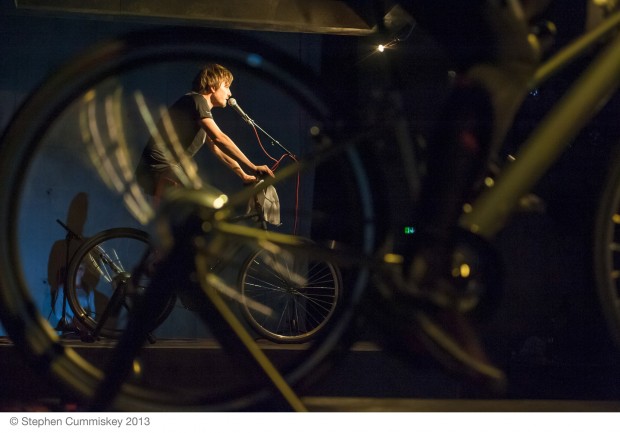You have no items in your cart. Want to get some nice things?
Go shopping
When I interviewed designer Chloe Lamford a few months ago, she suggested that the dream for her when creating the world of a play is to find a “golden idea” which encapsulates the central premise of the text whilst creating a space which is theatrically interesting. Referencing her design for the Schaubühne’s production of Duncan Macmillan’s Lungs, which saw the actors peddling stationary bikes to create the show’s power in order to comment on the play’s themes of global warming, Lamford told me that once an idea like that is found, it’s a no-brainer. In two of its recent shows by American playwrights, the Gate Theatre has found a way of achieving this on a small scale, creating designs which act as a space within which the play can occur whilst simultaneously commenting on its ideas, demonstrating the importance of non-naturalistic design in theatre.
Last year, Christopher Haydon’s production of George Brant’s Grounded took the Edinburgh Fringe by storm before a sell-out run in London, capturing a desire to question the use of drone warfare in the twenty-first century (it’s also back for a limited run next month). The set, designed by Oliver Townsend, was little more than gauze cube, within which Lucy Ellinson performed the searing monologue. A projection on the floor allowed for moments of tension to be heightened and coloured lights shifted our perception throughout. Crucially, Ellinson was unable to see out of the box even as the audience watched her, thus allowing the set itself to be complicit in the notion of surveillance and perception.
More recently, Alex Lowde’s design for Dan O’Brien’s The Body Of An American (currently playing at the Royal and Derngate) has achieved a similar feat, discovering a design which perfectly houses the play for which it is made. In James Dacre’s production of this proto-documentary play about war photographer Paul Watson, we sit within a makeshift bunker which mirrors the setting for the latter portion of the piece. Tiny lights on the ceiling illuminate the two actors, who perform in traverse with a projector at either end of the playing space. Again, it’s the entirety of the play’s argument in minutiae, exploding its ideas whilst at the same time interrogating them with forensic detail.
What’s astonishing about these two designs is that they manage to say so much whilst being beautifully simple; a cube and a bunker. They give us an extra lens through which to contemplate the ideas the plays present us with, but also exist as works of art within their own right, coming with their own associations and meanings. Granted, these carefully crafted designs may be partly down to the limited requirements of each piece, but they nonetheless take the plays and find new ways of looking at them.
To my mind, the reason for their success is quite simply down to their refusal to be tied to notions of “realism”. These plays are written in the abstract anyway, with jumps in time and character, but some may have been tempted to find more conventional styles of presentation. By finding an abstract space within which to present an abstract play, however, these two aspects of production are able to work together to create a gorgeous, unique synthesis. By steering clear of more representational modes of theatre-making, the Gate have proved that theatre is at its most powerful when it makes the most of its status as a form which is driven by metaphor.

About Dan Hutton
Dan is a freelance critic and theatre-maker. He won the Howard Hobson Award for Theatre Criticism at NSDF in 2010, 2011 and 2013, and in 2013 was the runner-up for the Edinburgh Fringe Allen Wright Award for Arts Journalism. Dan is also a director and co-runs Barrel Organ Theatre.




